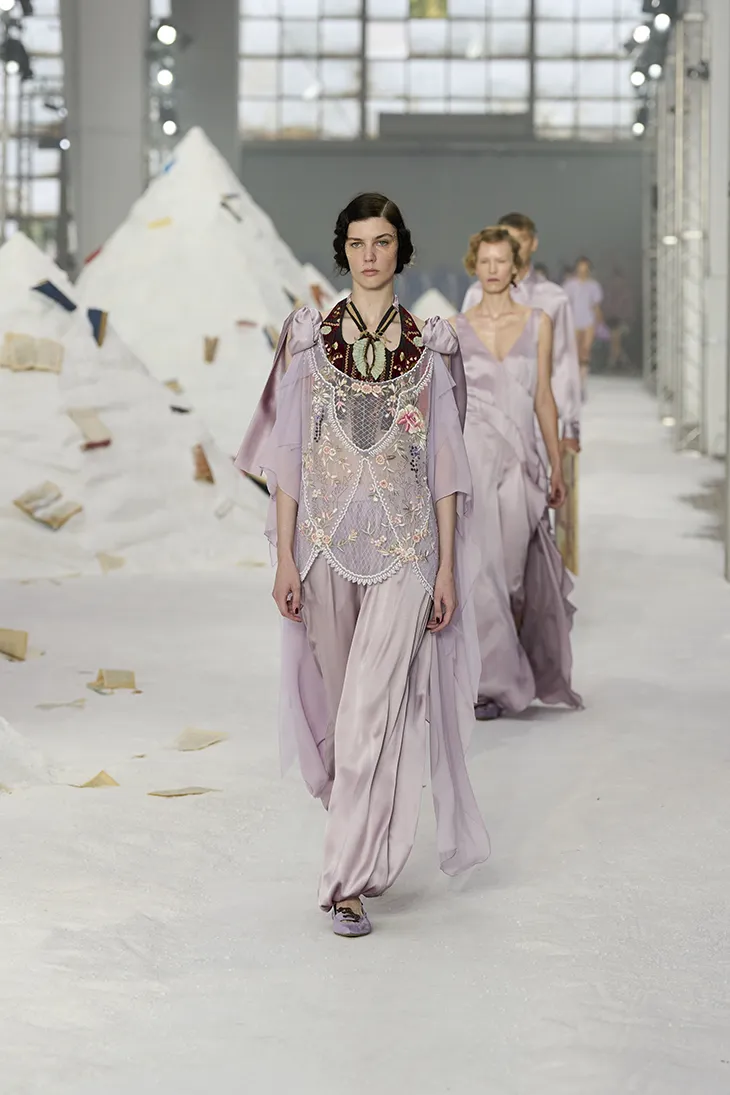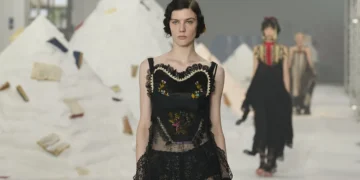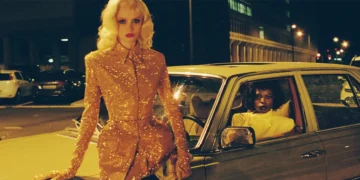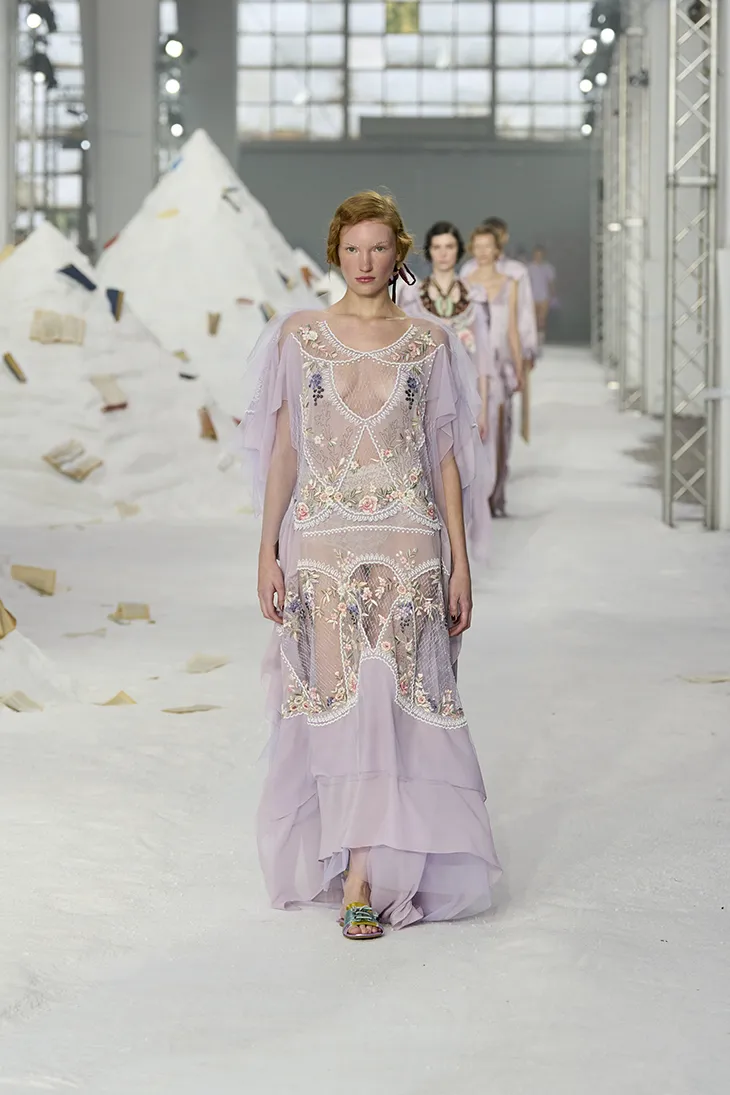
Antonio Marras presented his Spring Summer 2026 collection as an imagined travel diary set in Sardinia. The project looked to Alghero as a place of beauty and belonging, while also drawing on literary figures whose stories intersect with the island. D.H. Lawrence, remembered for Sea and Sardinia, appeared in this vision together with Frieda von Richthofen, Katherine Mansfield, and the Bloomsbury Group, reimagined as visitors discovering Alghero’s atmosphere. Marras combined their presence with Sardinian traditions, creating a collection where fabrics, colors, and silhouettes carried the narrative.
The palette reflected both softness and depth. Lilac, pink, and powder tones appeared beside shades of chocolate, plum, copper, and bronze, complemented by ecru, cream, sand, and dust. This range of colors was applied across jacquard, damask, lace, denim, leather, and faux fur. Techniques such as embroidery, patchwork, pleats, moulages, inlays, and draping enriched the textiles, giving each surface texture and variation. Patterns included checks, stripes, pinstripes, chevrons, polka dots, geometric designs, and florals.
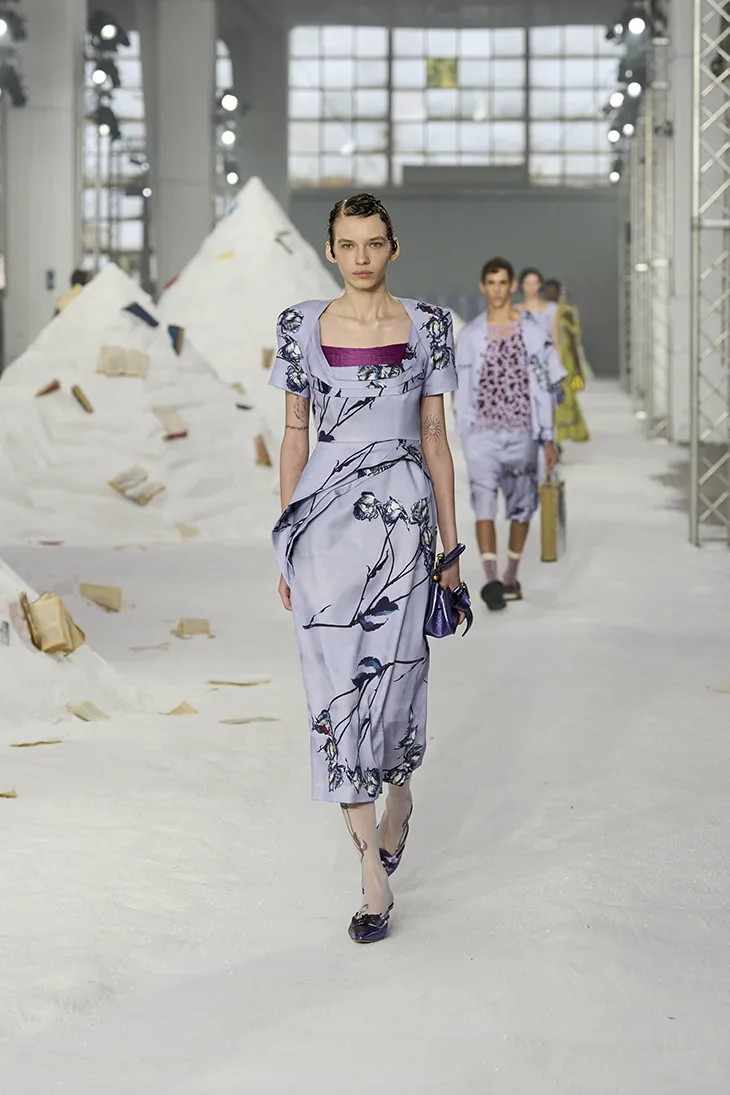
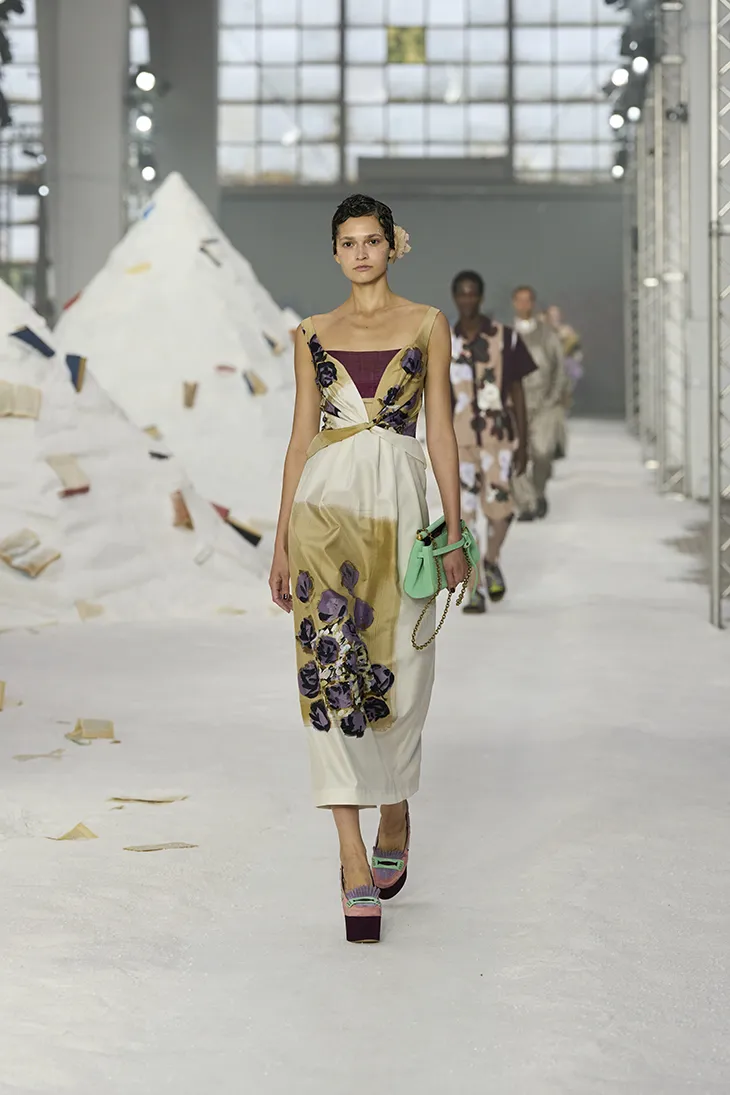
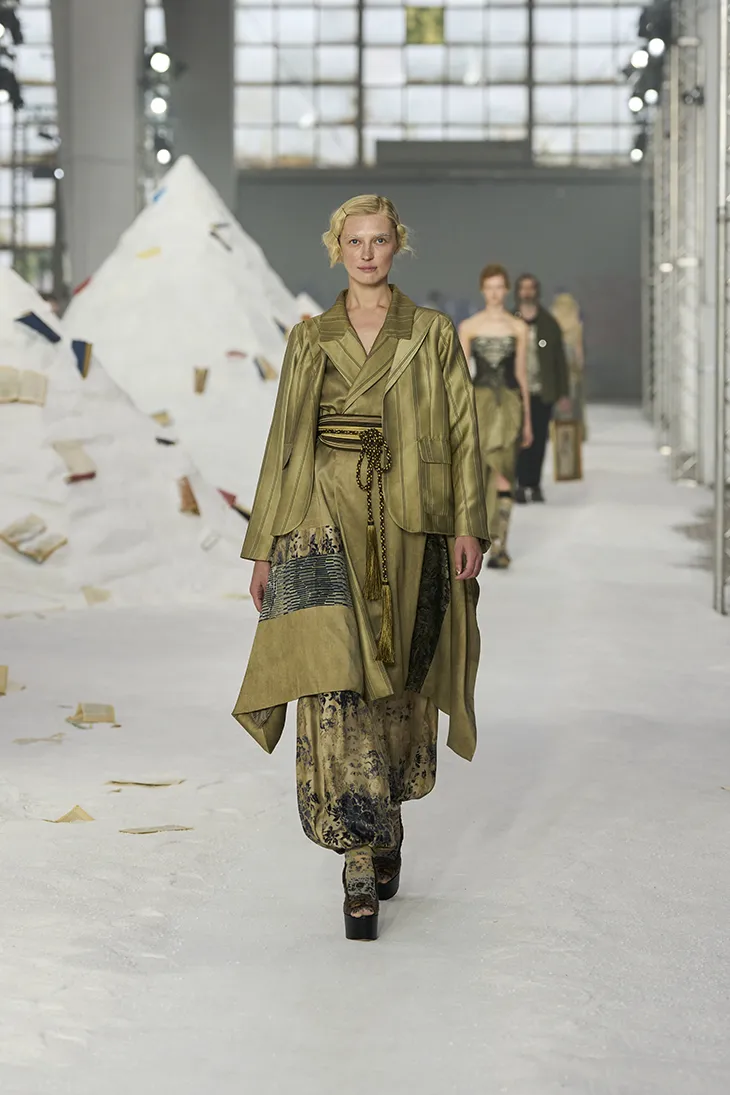
Silhouettes featured robes with cinematic presence, cocktail dresses, pajama sets, men’s dressing gowns, tailored jackets, peacoats, and evening wear. Knitwear was crafted to resemble embroidery, while embroidery itself was worked in a way that suggested watercolor. Men’s and women’s pieces shared fabrics, interpreted differently in cut and detail to underline variations in formality and character.
Literary references gave context to Marras’s vision. Lawrence’s 1921 stay in Sardinia provided the foundation, while Frieda von Richthofen’s unconventional path and Katherine Mansfield’s voice in modernist literature expanded the circle. The Bloomsbury Group, remembered for their nonconformist ideas in art and society, reinforced the sense of an imagined community finding Alghero as a place of refuge and creativity.
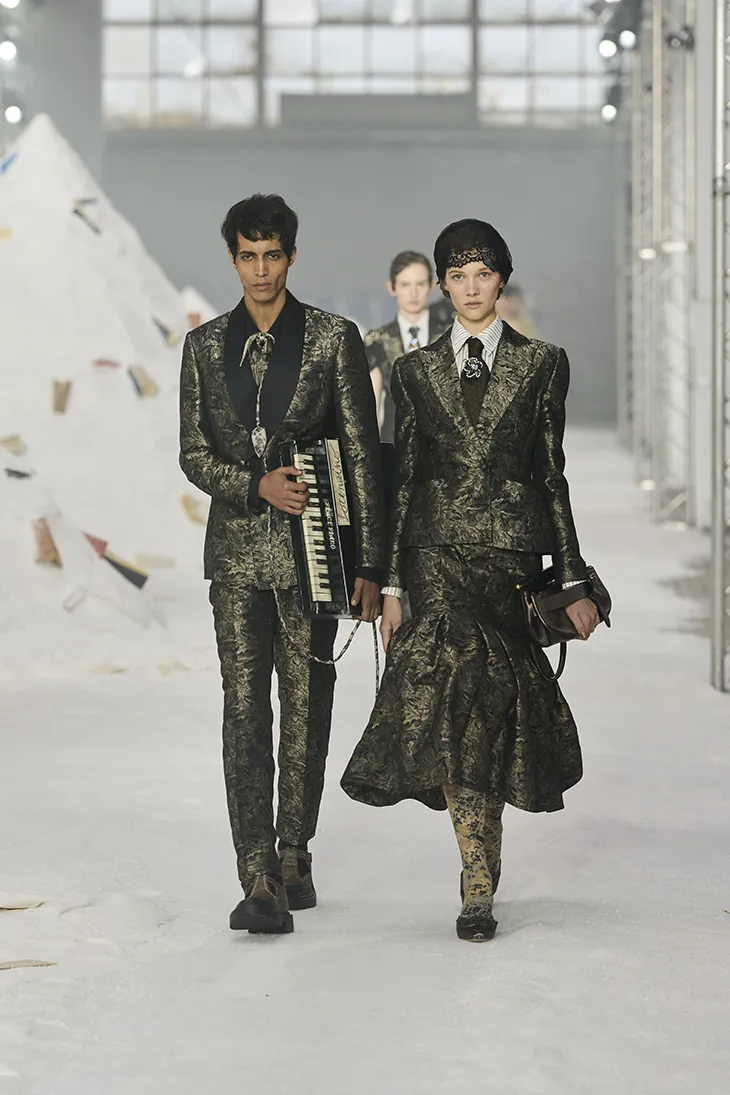
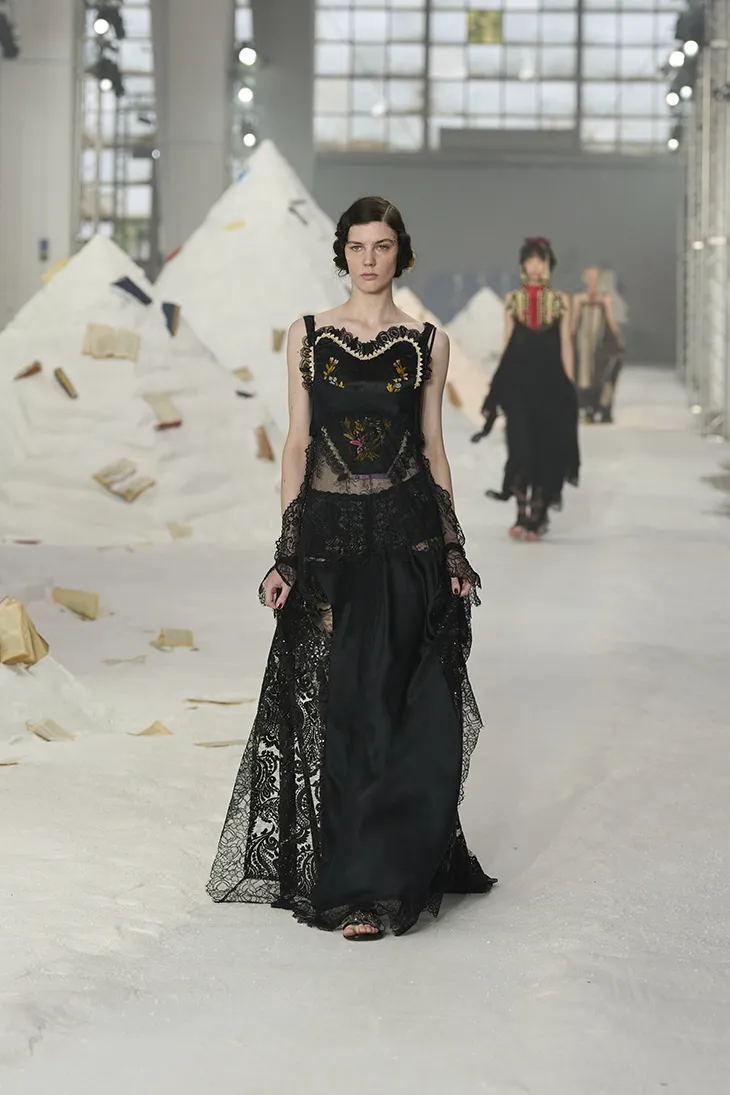
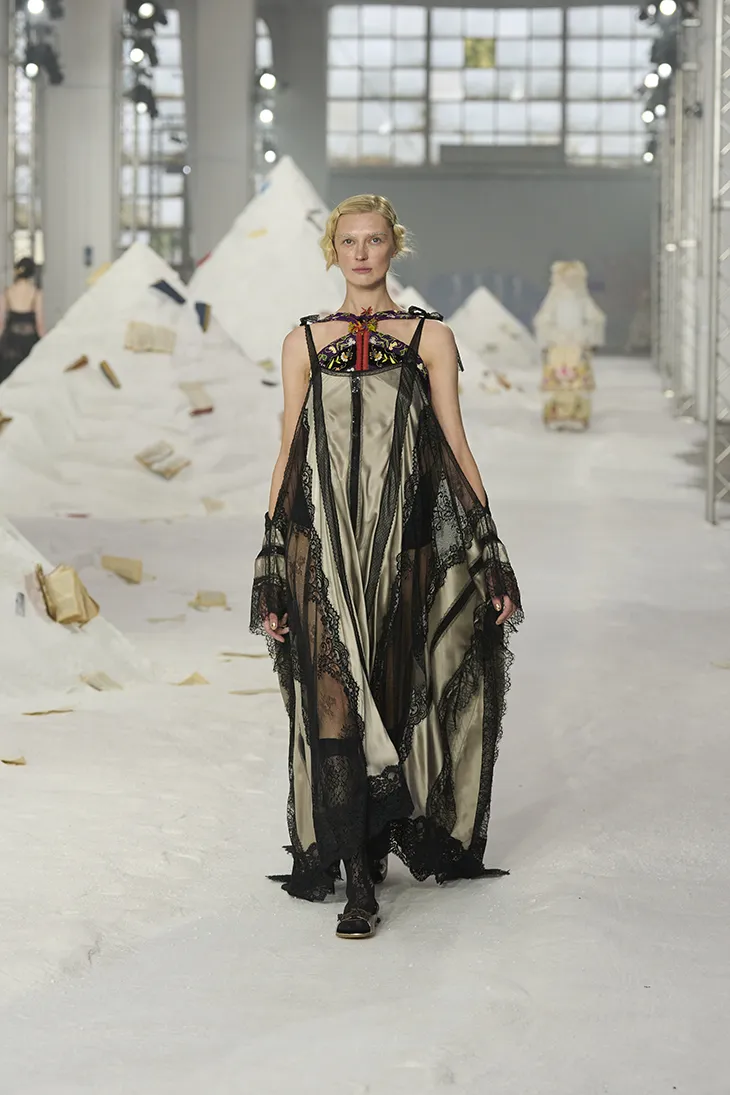
The collection placed strong emphasis on local traditions. Original Sardinian costumes were shown as they are, without reinterpretation, reinforcing their value as collective heritage. Marras stressed that beauty belongs to everyone and must be shared. The shepherd Giuseppe Ignazio Loi, remembered for refusing to sell his land to a multinational company and later portrayed in Riccardo Milani’s film E la vita va così, was included as a symbol of attachment to roots and resistance against external pressure.
Marras also drew attention to the wider Mediterranean context. Sardinia was presented as a crossroads of civilizations, shaped by exchanges between East and West. Through this lens, the collection addressed ideas of métissage and cultural cross-pollination, showing how traditions combine to create new forms. By integrating literary references, Sardinian culture, and Mediterranean history, Marras built Spring Summer 2026 as a narrative expressed in fabric, cut, and color.
